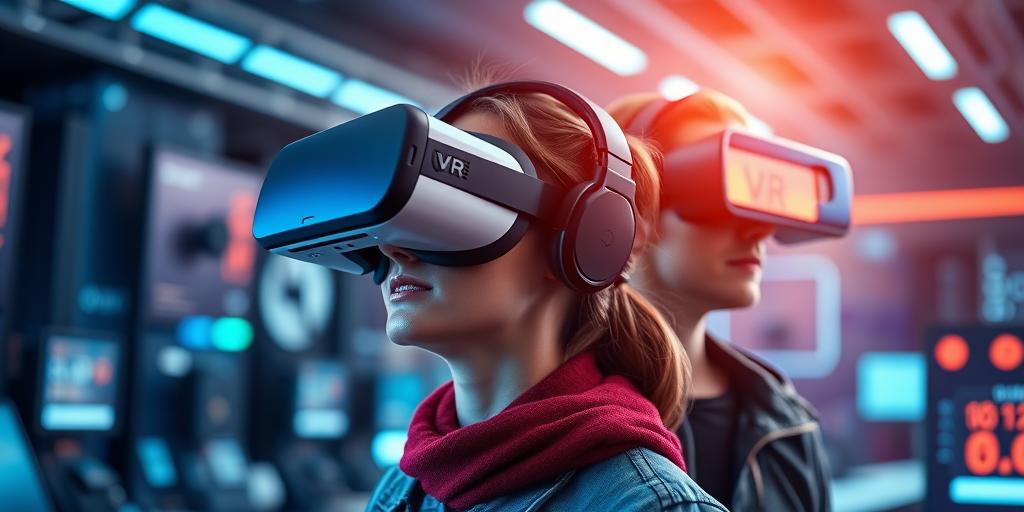The Technology Behind Virtual and Augmented Reality
Virtual Reality (VR) and Augmented Reality (AR) are transforming how we interact with technology and the world around us. But what exactly powers these immersive experiences? Let's dive into the core technologies that make VR and AR possible.
1. Displays and Optics
At the heart of any VR/AR system is the display. VR headsets typically use OLED or LCD panels to create visuals. High refresh rates and resolution are crucial for reducing motion sickness and enhancing realism. AR glasses, on the other hand, often use transparent displays that overlay digital information onto the real world. Advanced optics, like Fresnel lenses, are used to focus the light from these displays, creating a clear and wide field of view.
2. Sensors and Tracking
To create a convincing sense of immersion, VR and AR systems need to track your movements accurately. This is where sensors come into play:
- Inertial Measurement Units (IMUs): These combine accelerometers, gyroscopes, and magnetometers to track head orientation and movement.
- Cameras: Used for inside-out tracking, where the device tracks its position relative to the environment, or outside-in tracking, where external sensors monitor the device's movement.
- Depth Sensors: Provide information about the distance to objects in the environment, enabling more accurate and robust tracking.
3. Computer Vision
Computer vision algorithms are essential for AR to understand and interact with the real world. These algorithms analyze the data from cameras to:
- Detect and Recognize Objects: Identifying objects like tables, chairs, or even specific products.
- Track Surfaces: Understanding the geometry of the environment to anchor virtual objects to real-world surfaces.
- Estimate Lighting Conditions: Adjusting the rendering of virtual objects to match the lighting in the real world.
4. Rendering and Graphics
Creating realistic and responsive virtual environments requires powerful rendering capabilities. VR and AR systems rely on GPUs (Graphics Processing Units) to generate the images displayed to the user. Advanced rendering techniques, such as:
- Shading and Texturing: Adding detail and realism to virtual objects.
- Real-time Lighting and Shadows: Simulating the interaction of light in the virtual environment.
- Spatial Audio: Creating a 3D soundscape that enhances the sense of immersion.
5. Haptics
Haptics is the science of touch. Integrating haptic feedback into VR and AR experiences can significantly enhance realism and immersion. Haptic devices can provide a range of sensations, such as:
- Vibrations: Simple vibrations to indicate events or interactions.
- Force Feedback: Simulating the feeling of pushing against a solid object or grasping a virtual object.
- Tactile Feedback: Recreating the texture and shape of virtual objects.
6. Networking and Connectivity
Multiplayer VR and AR experiences require robust networking capabilities to synchronize the actions of multiple users in real time. Technologies like:
- Wi-Fi 6: High-bandwidth, low-latency wireless communication.
- 5G: High-speed mobile connectivity for untethered VR/AR experiences.
- Edge Computing: Processing data closer to the user to reduce latency.
are enabling new forms of social interaction and collaboration in virtual and augmented environments.
Conclusion
VR and AR technologies are rapidly evolving, driven by advances in displays, sensors, computer vision, rendering, haptics, and networking. As these technologies continue to improve, we can expect even more immersive, realistic, and transformative VR/AR experiences in the years to come.









